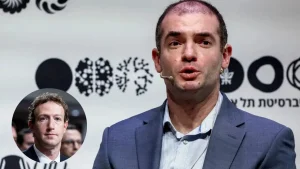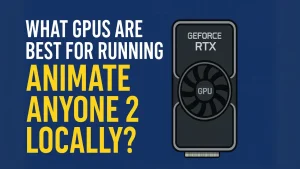Why The Stochastic Mindset Could Be The Ultimate Superpower In The Age Of AI?
“In an era shaped by artificial intelligence, clinging to certainty may be the most dangerous form of ignorance.”
We’re not in the industrial age anymore. We’re not even in the information age. We’ve entered the probabilistic age where AI, algorithms, and decision-making tools function not through certainty, but through statistical patterns.
Let’s break down why this shift demands a new mindset
Certainty feels safe—but its a lie we can’t afford no more.
From blockbuster business collapses to geopolitical screw-ups, the myth of predictability has tripped up even the smartest folks into epic fails. Kodak clung to film while digital photography took over the world. Blockbuster chuckled at Netflix. The U.S. military poured cash into the Maginot Line, built for yesterday’s battles, not tomorrow’s fights. The 2008 financial crisis? A massive explosion of models banking on false certainty.
These weren’t brainpower flops. They were thinking flops—specifically, sticking to deterministic thinking: the idea that the world ticks like a clock, cause leads straight to effect, and we can predict the future if we just crunch the numbers hard enough.
But we ain’t living in a clockwork world, folks.
We’re in a wild, messy world of volatility, complexity, and half-baked info—a world better captured by probability distributions than crystal-ball forecasts. Stuff happens like Monte Carlo simulations, not some scripted play. Whether it’s a startup blowing up online, a machine learning model tweaking its weights, or a political riot kicked off by a viral meme, the systems we deal with are stochastic by nature.
In this crazy landscape, thinking deterministically isn’t just old-school; it’s straight-up risky.
AI’s forcing us to wake up to this. The fanciest systems today-like GPT-4 or deep seek don’t “know” stuff for sure. They pull from probability distributions, learn from fuzzy situations, and update their guesses on the fly. They don’t just survive uncertainty—they rock it.
And we gotta do the same.

Big thinkers like Nassim Nicholas Taleb have been yelling for years that we’re in “Extremistan,” not “Mediocristan,” where weird, rare events call the shots. Groups like PMI are telling project managers to get on board with probabilistic planning. And cognitive science backs it up: our brains are built to handle noise and feedback—if we figure out how to roll with it.
This piece dives into the mindset that fits this reality: the stochastic mindset—a legit superpower for handling uncertainty, built on probabilistic thinking, Bayesian learning, antifragility, and sorting signal from noise.
Because in the AI age, it’s not about nailing one lucky guess.
Even PMI Went Stochastic
In 2021, the Project Management Institute overhauled its global standard (PMBOK), shifting from a rigid, process-heavy framework (PMBOK 6) to a principle-driven, adaptive model (PMBOK 7). This wasn’t just an administrative change
; it was a response to increasing complexity, uncertainty, and system-level volatility. In other words, even the world’s most established management body realized: in the age of AI, thinking probabilistically beats planning rigidly.
What Is the Stochastic Mindset? And Why it feels Unreal?
“Probability is the very guide of life.”
— Cicero, Roman philosopher
Stochastic Mindset – Definition
The stochastic mindset is a brainy way to deal with uncertainty, leaning on probabilistic reasoning instead of banking on deterministic outcomes. It sees outcomes as possibilities with odds, not sure things—and it tweaks your beliefs as new data arrives.
Humans evolved in environments where decisive action was critical: fight or flee, eat or starve. Our minds prefer deterministic thinking clear outcomes, linear cause-effect, stories that “make sense.” But in a world shaped by AI, complexity, and randomness, this mindset becomes a liability.
The Problem: Our Brains Aren’t Built for Probability
Cognitive scientists like Kahneman and Tversky showed that our minds use fast-but-flawed shortcuts (heuristics) like:
- Representativeness: Believing random events must “look random”
- Availability: Judging likelihood by memory vividness
- Anchoring: Letting irrelevant numbers skew estimates
We treat probability as prediction and uncertainty as failure, And it’s only Biological. This leads to overconfidence, poor forecasting, and fragile decision-making.
Example: If you hear “30% chance of rain,” your brain wants “yes” or “no.” But the reality is: it might rain- and you should plan accordingly
Mindset Shift Starts Here (With AI)

Deterministic Users:
“AI should always be right.” → Disappointment, distrust, or overreliance
Stochastic Thinkers:
“AI is a probabilistic engine.” → Refinement, feedback, better outcomes over time
Here is a cognitive pattern comparison chart showing Direct (Deterministic) Thinking vs. Stochastic Thinking across common real-world scenarios with ChatGpt. This format highlights how both modes of thinking approach the same situation but yield drastically different outcomes in learning, adaptability, and decision quality.
This skill is a core pillar when mastering Ai literacy and hence Prompt Engineering.
Cognitive Pattern Comparison: AI Use Deterministic vs. Stochastic Thinking
| AI Use Scenario | Deterministic Thinking | Stochastic Thinking (Probabilistic Mode) |
|---|---|---|
| Using ChatGPT or Gemini for Answers | “This response is wrong, so the AI doesn’t work.” | “The model sampled from probabilities—it made a low-confidence prediction. I’ll prompt again or refine.” |
| Running Ads with Meta/Google AI | “The ad failed. AI targeting is broken.” | “This ad didn’t convert. Let’s review the probability weights—wrong audience, wrong creative, or just variance?” |
| Generating Content Titles with AI | “This one isn’t catchy. The tool is bad.” | “I’ll generate 20 variants and pick the top 3 based on engagement metrics—this is a statistical content game.” |
| AI-Powered Hiring Tools | “The tool flagged the wrong candidate—it’s flawed.” | “AI flagged based on trained patterns. Let’s combine it with human judgment and structured data.” |
| AI Detection of Fraud or Spam | “It missed one case. It’s not reliable.” | “Detection works probabilistically—false negatives are trade-offs for precision. Let’s adjust the threshold.” |
| Using LLMs in Customer Support | “The bot didn’t solve the issue. It’s useless.” | “AI gave a ~70% accurate first pass. Let’s design the system to escalate intelligently when confidence drops.” |
| AI in Medical Diagnosis (e.g. Skin Lesion Classifier) | “It predicted cancer and was wrong. Dangerous tool.” | “It predicted a 40% chance. It’s an input—not a verdict. Combine it with a specialist and further tests.” |
| YouTube AI Recommendations | “I got a weird video—algorithm’s broken.” | “It’s optimizing for engagement probabilities. I can fine-tune it by clicking ‘Not interested.’” |
| Predictive Text in Emails | “That’s not what I wanted to write.” | “AI is offering a high-likelihood continuation—not a command. I guide the intent.” |
| Using AI to Forecast Sales | “The forecast was off—it failed.” | “The model gave a likely range. Outlier events skewed results. Next time, let’s factor in uncertainty bands.” |
Core Principles of the Stochastic Mindset
- Think in Probabilities, Not Certainties
- Make decisions based on likelihoods, not guarantees.
- Great for entrepreneurship, investing, scientific thinking.
- Accept Variance and Noise
- A single outcome doesn’t always reflect the quality of your decision.
- You can do everything right and still “fail”—temporarily.
- Optimize for Expected Value (EV)
- High-upside, low-downside decisions—even if they rarely pay off—are often worth it.
- Example: Startups, experiments, content virality.
- Update Beliefs Continuously
- Like Bayesian thinkers, adjust your assumptions as new data arrives.
- Never cling to one model; adapt in real time.
- Antifragility Over Fragility
- Create systems that benefit from randomness (a concept from Nassim Taleb).
- E.g., portfolios of blog posts where one going viral pays for 100 that don’t.
How to Build a Stochastic Mindset: 4 Key Pillars for Modern Thinkers
If you read through this far, You probably have now realised that In a world of uncertainty, the stochastic mindset isn’t just a skill – it’s a survival framework. Below are the four foundational pillars that anyone from startup founders to AI userscan adopt to begin thinking like a probabilist.
🔍 1. Think in Probabilities, Not Absolutes
“What’s likely?” beats “What’s right?”
Stop asking “Will this work?” and start asking “What’s the chance this works—and what happens if it doesn’t?”
✅ Practice Tip:
Estimate the probability of outcomes before making decisions (even roughly). Track how often you’re right.
Example: “I think there’s a 60% chance this content performs well on LinkedIn.”
🔁 2. Update Beliefs Like a Bayesian
What you believe should evolve with evidence.
Stochastic thinkers don’t lock into fixed narratives. They update hypotheses as new data arrives—just like your brain unconsciously does every day.
✅ Practice Tip:
When something surprises you, ask: “What prior belief does this challenge?” Then recalibrate.
Think: weather forecasts, A/B tests, health tracking.
⚖️ 3. Optimize for Expected Value (Not Certainty)
A good decision can lead to a bad outcome—and vice versa.
High-value decisions often come with risk. The key is to maximize long-term payoff, not avoid short-term discomfort.
✅ Practice Tip:
Use the EV formula: EV = (Probability of Success) x (Magnitude of Reward)
Would you take a 20% chance at $1M over a 90% chance at $10K?
🧬 4. Design for Antifragility
Don’t just survive randomness—benefit from it.
In a stochastic world, build systems that gain from variability. That means taking many small bets, embracing feedback, and engineering asymmetry (small downside, big upside).
✅ Practice Tip:
Run 10 content experiments. Expect 1 to spike and cover the cost of the other 9.
This is how Netflix, startups, and modern investors operate.
In Summary:
The stochastic mindset isn’t just about risk tolerance.
It’s about becoming the kind of thinker who:
- Predicts less, observes more
- Fails faster, learns faster
- Chooses action based on signal—not illusion
It’s a shift. A recalibration. An upgrade.
And if the future belongs to those who adapt fastest, then this mindset may be your ultimate edge in the age of AI.





